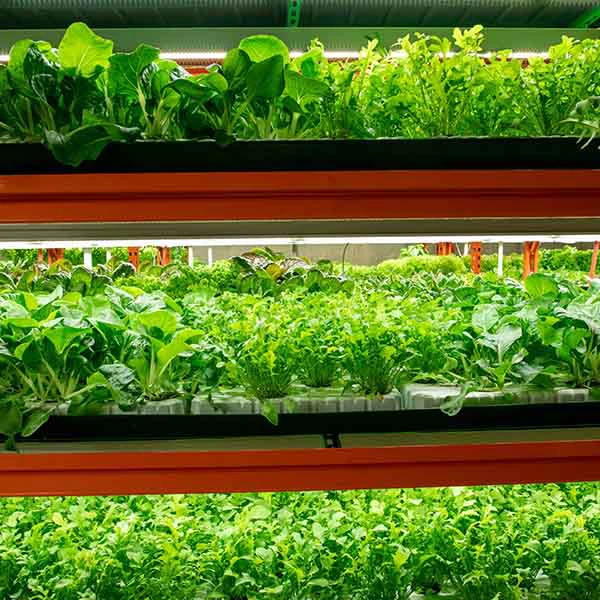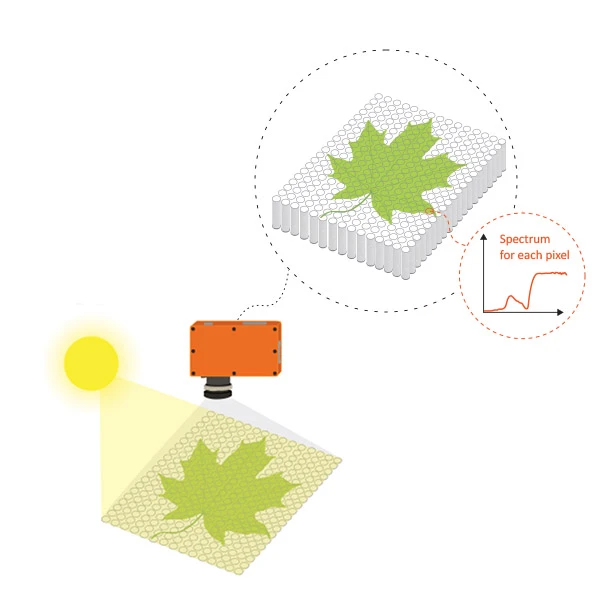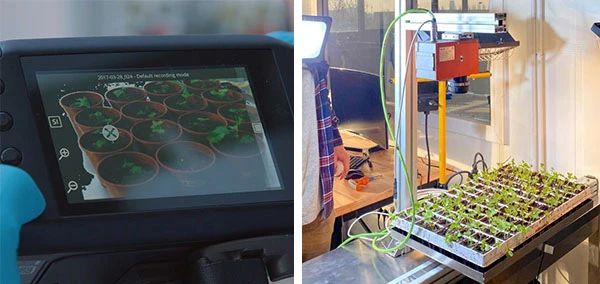Optimizing Vertical Farming with Hyperspectral Imaging

Vertical farming has seen a surge in popularity in recent years as more and more people are looking for sustainable alternatives to traditional agricultural practices. Vertical farms differ from traditional farms because they grow crops densely packed in vertically stacked layers, using artificial climates that can be precisely controlled. This means vertical farming can produce high yields even in small spaces such as warehouses and laboratories. However, the setup and operational costs are relatively high, and to achieve efficiency, the growth conditions of crops must continuously be at their best. This is where technology like hyperspectral imaging (HSI) plays a pivotal role.

Hyperspectral Imaging
HSI is a novel technology that is used increasingly in many research and industrial applications, especially in the field of agriculture and vegetation. HSI analyzes a wide spectrum of light through the combination of spectroscopy and digital imaging techniques to obtain an object’s spectral and spatial information that can be used to optimize crop production. It offers a non-destructive method of monitoring and measuring various physical, chemical, and biological parameters in plants which would otherwise require chemical analysis that is destructive and slow. The use of HSI to quantify plant traits is well documented in many research. It has been widely used to detect biotic and abiotic stresses in plants as well as functional components like chlorophyll, carotenoid, anthocyanin, etc. HSI is also used to predict the presence of macronutrients like total nitrogen spatial distribution in pepper plants (Yu et al., 2014), phosphorus content in celery, sugar beet, and strawberry (Siedliska et al., 2021), potassium content in sugar beet and celery (Baranowski et al., 2022), etc.
The three commonly used spectral wavelengths used in plant phenotyping are the visible (VIS) between 400 nm to 700 nm, the near-infrared (NIR) between 700 nm to 1,000 nm, and the short-wave infrared (SWIR) from 1,000 nm to 2,500 nm. Photosynthetic pigments like chlorophylls absorb light strongly in the VIS wavelength range, especially in the blue and red regions. There is less absorption of light in the green region within the VIS wavelength, where much is reflected, giving plants their green appearance. Chlorophyll absorbs light efficiently until the NIR region, where most of the light is reflected. An abrupt reflectance change can be observed within a specific region between the VIS and NIR (approx. 680 nm to 730 nm), known as the red edge, and is generally used in plant stress detection. For example, a shift in the red edge slope towards the shorter wavelength would indicate low chlorophyll concentrations and increasing stress levels in the plant. Water content in the plants is generally analyzed using the NIR and SWIR wavelength range, where they show strong reflection in NIR but strong adsorption in SWIR. To date, there are many vegetation indices (VIs) developed from various studies that offer a simple and fast approach to hyperspectral data analysis, including NDVI (Normalized Difference VI), mCARI (Modified Chlorophyll Absorption Ratio Index), mARI (Modified Anthocyanin Reflectance Index), REP (Red Edge Position), etc.

Spectral wavelength range for hyperspectral Imaging
Specim Hyperspectral Cameras for Agriculture and Vertical Farming
Konica Minolta Sensing, with group company Specim, a pioneer in the field of HSI, offers several highly reliable, high-resolution pushbroom (line scan) hyperspectral cameras that can support various vertical farming applications.
Specim IQ Hyperspectral Camera
A portable hyperspectral camera covering the VNIR (visible and near-infrared) wavelength range, the Specim IQ hyperspectral camera is capable of fast and easy acquisition of hyperspectral data in all environments, whether indoor or outdoor. With camera-like and simple operation and an in-built scanner, the Specim IQ hyperspectral camera allows anyone, from beginners to experts in HSI, to perform HSI with ease. Watch this video and see how the Specim IQ hyperspectral camera is used to detect the presence of anthocyanin in plants.
Specim FX Series Hyperspectral Cameras
The Specim FX series hyperspectral cameras come in three different models: the VNIR hyperspectral camera Specim FX10, the NIR hyperspectral camera Specim FX17, and the MWIR (medium wavelength infrared) hyperspectral camera FX50. The Specim FX series hyperspectral cameras are the ideal choice for a wide variety of industrial and research applications due to their outstanding speed and performance. For example, Agricola Moderna, a vertical farming company, uses the Specim FX10 hyperspectral camera to monitor the nitrogen, phosphorus, and potassium levels in their leafy greens and salads.

Specim IQ hyperspectral camera (left) and Specim FX10 hyperspectral camera (right).
Image courtesy of SPECIM, SPECTRAL IMAGING LTD.
Aside from hyperspectral cameras, Konica Minolta sensing also offers a wide selection of instrumental solutions that can support researchers and agricultural producers in their research, production, and quality control. These include light meters for measuring light source output, color measurement instruments for checking crops’ quality and ripeness, etc. Check out our range of instrumental solutions for the agriculture industry here.
Need help finding the right hyperspectral cameras or solutions for your vertical farming applications? Get in touch with us for a free consultation now.
